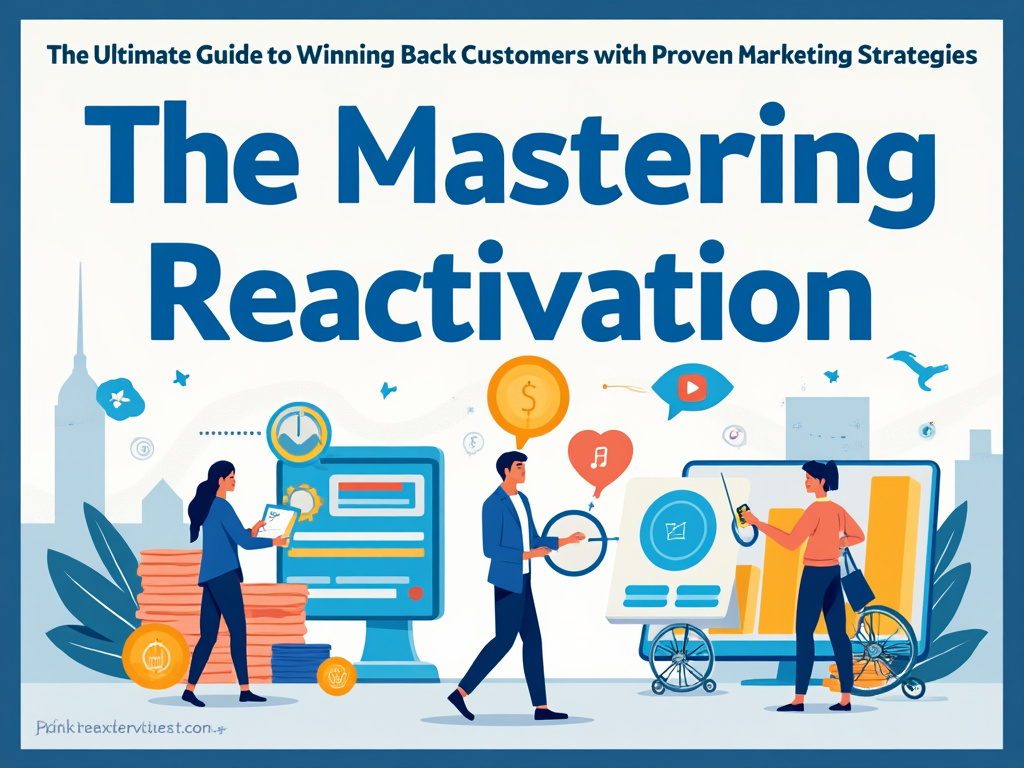Reactivation: The Ultimate Guide to Winning Back Customers with Proven Marketing Strategies

Reactivating past customers can feel like a daunting task for e-store owners, but it’s crucial for maintaining steady growth and ensuring your business doesn’t just survive but thrives. If you’ve honestly evaluated your sales funnel, you know that capturing new customers is important, but winning back former customers can often yield higher returns. These individuals have already shown interest in your brand, making them prime targets for re-engagement efforts. Let’s dive into actionable strategies for reactivating those valued customers.
Understanding Why Customers Leave
Before diving into strategies for reactivation, it’s essential to understand why customers may drift away. A few common reasons include:
- Lack of engagement: Customers might not feel connected to your brand.
- Competitor attraction: They may find better products, prices, or experiences elsewhere.
- Quality issues: Previous purchases didn’t meet expectations.
- Ignoring feedback: If customers feel unheard, they may take their business elsewhere.
By identifying these pain points, you can strategically address them in your reactivation efforts, showing customers that you genuinely care about their experience.
The Power of Personalization
One of the most effective ways to win back customers is through personalized marketing. Today’s shoppers crave a tailored experience, and with tools like Incomaker, you can automate marketing emails that speak directly to your customers’ preferences.
Here are a few tips on personalizing your outreach:
- Segment your audience—Group customers based on their past purchases or browsing behavior to send relevant content.
- Utilize dynamic content—Customize email content based on individual preferences or previous interactions.
- Incorporate past purchase data—Remind customers of what they loved before with a “We miss you!” email featuring products they previously bought.
By crafting a message that resonates with past behavior, you’re not just another faceless brand; you’re a familiar friend reaching out again.
Create Compelling Win-Back Offers
Sometimes, a little extra nudge can go a long way. Consider offering enticing incentives that encourage previous customers to return to your store. These could include:
- Exclusive discounts or coupon codes—A small percentage off their next purchase can be just the motivation they need.
- Free shipping—This can alleviate barriers that prevent customers from completing their purchases.
- Bundle deals—Create special offers that add extra value to their shopping experience.
When devising these offers, ensure they’re targeted and strategically timed. This not only enhances their effectiveness but shows that you value their past support.
Leverage Social Proof
People tend to trust what others say about products more than promotional messages from brands. Noticing success stories and customer testimonials can rekindle interest in your offerings. Here’s how to weave social proof into your reactivation strategy:
- Share positive reviews in your email campaigns—Highlight customer stories that can establish credibility.
- Feature user-generated content on your social media—Seeing happy customers can attract the attention of former ones.
- Encourage engagement through social channels—Create communities where customers can share experiences and connect with your brand.
When customers see that others still love your products, it may rekindle their forgotten affinity for your brand.
Effective Follow-Up Strategies
Your reactivation campaign doesn’t end once you send an email. Implementing a thoughtful follow-up strategy can provide further touchpoints, allowing you to remain present in the minds of former customers. Consider these approaches:
- Automated follow-up emails—Using a tool like Incomaker, you can set up a timed series of emails that remind customers you’ve missed them.
- Feedback requests—If a customer hasn’t engaged again, ask for their thoughts about their last experience—this shows you care and are committed to improvement.
- Surveys or polls—Gauge customer interest in both your products and what they’d like to see in the future, fostering a sense of collaboration.
A thoughtful follow-up can demonstrate your commitment to delivering a better experience, potentially re-establishing that lost connection.
Analyzing and Adapting Your Strategies
Data is your best friend when it comes to determining the effectiveness of your reactivation efforts. After executing your campaigns, pay attention to the metrics:
- Open rates—How many recipients are engaging with your emails?
- Click-through rates—Are they taking action based on your offers?
- Conversion rates—How many of those engagements turn back into sales?
Utilizing this information, continuously adapt your strategies until you find the right formula for success. It’s important to remain flexible and responsive to what resonates with your audience.
Reactivating past customers is not just a strategic move; it’s an opportunity to reignite relationships. By employing these strategies with creativity and a fearless heart, you can turn disinterest into re-engagement, seedling those cherished connections into flourishing business growth. Now, the question is: which strategy will you try first?



